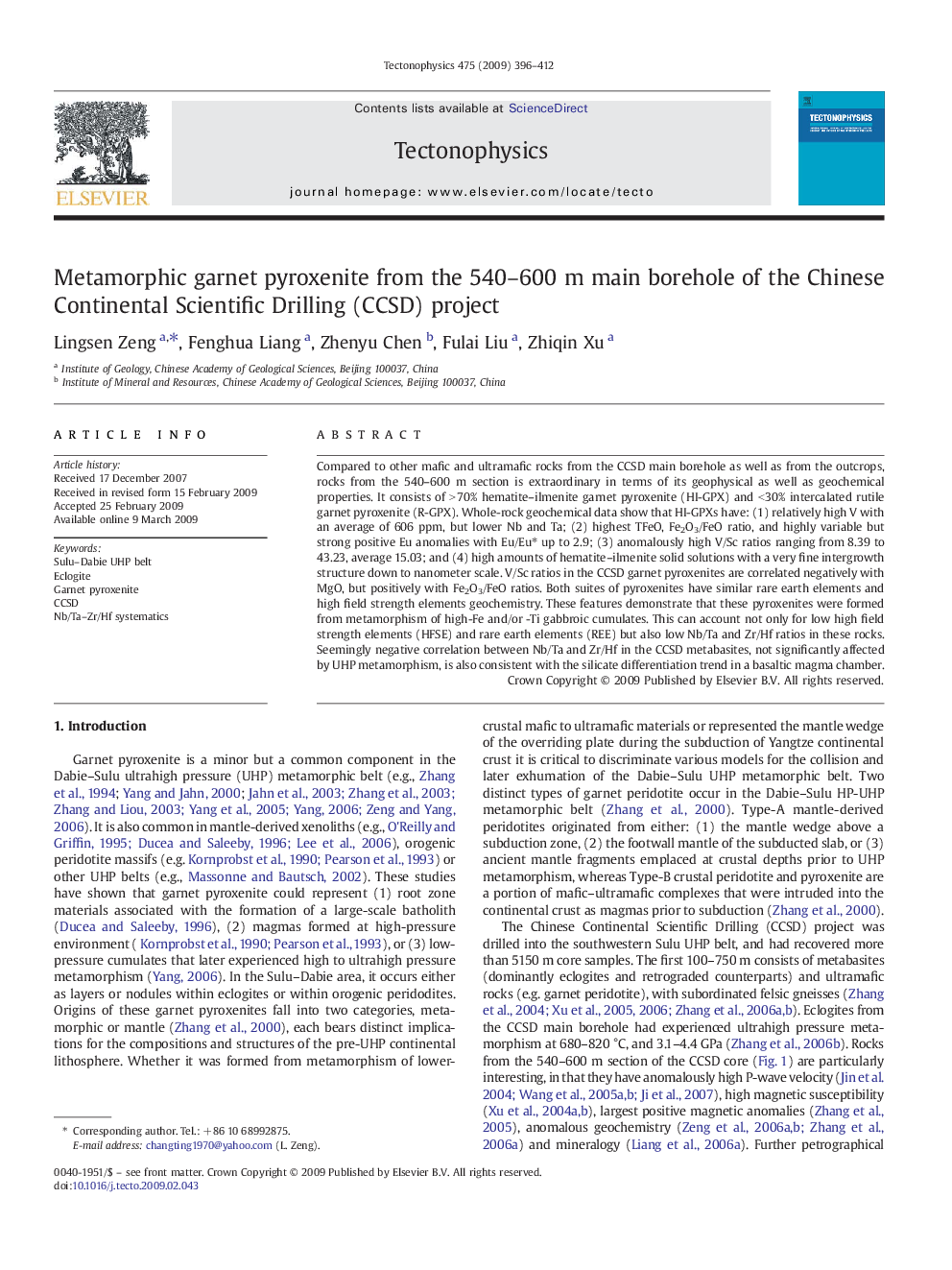| Article ID | Journal | Published Year | Pages | File Type |
|---|---|---|---|---|
| 4694061 | Tectonophysics | 2009 | 17 Pages |
Compared to other mafic and ultramafic rocks from the CCSD main borehole as well as from the outcrops, rocks from the 540–600 m section is extraordinary in terms of its geophysical as well as geochemical properties. It consists of > 70% hematite–ilmenite garnet pyroxenite (HI-GPX) and < 30% intercalated rutile garnet pyroxenite (R-GPX). Whole-rock geochemical data show that HI-GPXs have: (1) relatively high V with an average of 606 ppm, but lower Nb and Ta; (2) highest TFeO, Fe2O3/FeO ratio, and highly variable but strong positive Eu anomalies with Eu/Eu⁎ up to 2.9; (3) anomalously high V/Sc ratios ranging from 8.39 to 43.23, average 15.03; and (4) high amounts of hematite–ilmenite solid solutions with a very fine intergrowth structure down to nanometer scale. V/Sc ratios in the CCSD garnet pyroxenites are correlated negatively with MgO, but positively with Fe2O3/FeO ratios. Both suites of pyroxenites have similar rare earth elements and high field strength elements geochemistry. These features demonstrate that these pyroxenites were formed from metamorphism of high-Fe and/or -Ti gabbroic cumulates. This can account not only for low high field strength elements (HFSE) and rare earth elements (REE) but also low Nb/Ta and Zr/Hf ratios in these rocks. Seemingly negative correlation between Nb/Ta and Zr/Hf in the CCSD metabasites, not significantly affected by UHP metamorphism, is also consistent with the silicate differentiation trend in a basaltic magma chamber.
